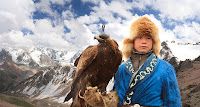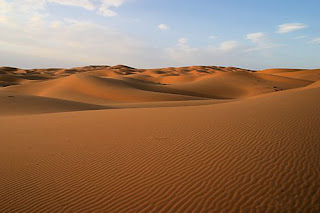In early 2012 the Canadain Co-operative Association recruited 8 credit union professionals from across Canada. Thier mission: To share thier collective knowledge, experience, skills and expertise with credit unions throughout Mongolia. By Charlie Collura - Member Team Mongolia 2012
Tuesday, July 31, 2012
Some interesting stuff I found on the internet about Mongolia
• A 131-foot statue of Genghis Khan sits on the steppe about an hours drive from Ulan Bator. He sits on the world's tallest statue of a horse.
• Mongolia has the oldest National Park in the world. Lying just South of Ulan Bator the Bogd Khan National Park dates its origin to 1778.
• Some people drive ten-thousand miles in a car to get to Mongolia - it's called the Mongol Rally. The rally finishes at a pub with a chilled beer waiting!
• Ulan Bator used to move three times a year - a nomadic city!
• Ulan Bator is the coldest capital city in the world.
• Mongolians spell Ulan Bator - 'Ulaan Baatar,' which means 'Red Hero.'
• Mongolia stands an average of 5,800 feet above sea level.
• Despite its landlocked status, Mongolia has many salt lakes.
• You could fit the Netherlands into Mongolia thirty-seven times.!
• The Gobi Desert was once a sea - which explains the marine fossils.
• Many dinosaur fossils still lie exposed. Roy Chapman Andrews made the first discovery of dinosaur eggs in the Gobi. His exploits inspired the creation of Indiana Jones.
• Genghis Khan could not read or write, but he commissioned the first Mongolian writing system - the Mongolian script.
• Since the Soviet period, Mongolians have used the Cyrillic script.
• In Mongolian the verb comes last. If you want to know whether a Mongolian loves or hates you, you have to wait till the end of the sentence!
• Genghis Khan had a 'celestial insurance' policy. He tolerated all religions hoping that at least one of the Gods would show its appreciation.
• After Genghis Khan died, Buddhism became the dominant religion.
• The 'reincarnation' of a Buddhist saint - the Bogd Khan - ruled Mongolia from 1911-1924.
• Navaandorjiin Jadambaa became the first President of Mongolia in 1924. His presidency lasted one day!
• Since the 1990s the president presides over a democratic parliament.
• The president controls foreign policy - the election of a new president leads to new embassy staff worldwide.
Mongolian Government Facts
• Mongolia has embraced multi-party parliamentary democracy since 1990.
• The parliament calls itself the State Great Khural and consists of seventy-six deputies.
• The parliament can veto presidential decrees with a two-thirds majority.
• On a minimum salary you will collect US$150 a month for full-time work.
• The Mongolian currency is called the tugrik.
• The Mongolian Stock Exchange is the smallest in the capitalist world.
Genghis Khan:
• Genghis Khan lived his life as a nomad.
• A rival tribe killed his father while he was still in his youth. Abandoned by his tribe he went on to conquer the world's largest empire.
• Genghis Khan is just a title. His real name was Temujin.
• Genghis Khan's grandson, Kublai, united China for the first time. His dynasty became known as the Yuan dynasty.
General Mongolia Facts:
• It's a fact that thirty percent of the population is under fourteen.
• In the seventeenth Century, the Manchu dynasty divided Mongolia into Inner Mongolia and Outer Mongolia.
• Outer Mongolia declared independence from China in 1911 but then fell under Soviet influence.
• Outer Mongolia became a democratic democracy in 1990. Inner Mongolia remains under Chinese control.
• Snow leopards are native to Mongolia. A quarter of the world's population lives here.
• A snow leopard can leap fifty feet and perform a vertical jump of twenty feet.
• A snow leopard cannot purr or roar.
• Nomads keep eagles as pets. The Kazakh minority hunt with them.
• The two-humped camel comes from Mongolia and survives temperatures from minus to plus fifty degrees Celsius!
• Gerbils run around as wild animals in Mongolia.
• If you count carefully, you will notice slightly more horses than people.
• The Mongolian Takhi horse is the last wild horse in the world.
• Mongolian lakes and rivers contain more than fifty unique fish species.
• The Great Wall is in Inner Mongolia.
• The Great Wall was first built in the seventh century BC.
• It was last maintained as a defensive wall in the sixteenth century.
• Some experts claim a Mongolian King built the Taj Mahal and decorated it like a Mongolian ger.
• Until a few years ago Taiwan claimed Mongolia as a part of its territory.
• Mongolia has a population of 2,832,224; 94.9 percent of which is Khalkh Mongolian. The rest combines small groups of Turks, Russians, and Chinese. While a third of the population of Outer Mongolia lives in the capital city, Ulaan Baatar, the country is primarily rural and underdeveloped. Life expectancy is still low at 64.9 years. The nomadic lifestyle is prevalent and has contributed to the slow growth of the nation.
Subscribe to:
Posts (Atom)


